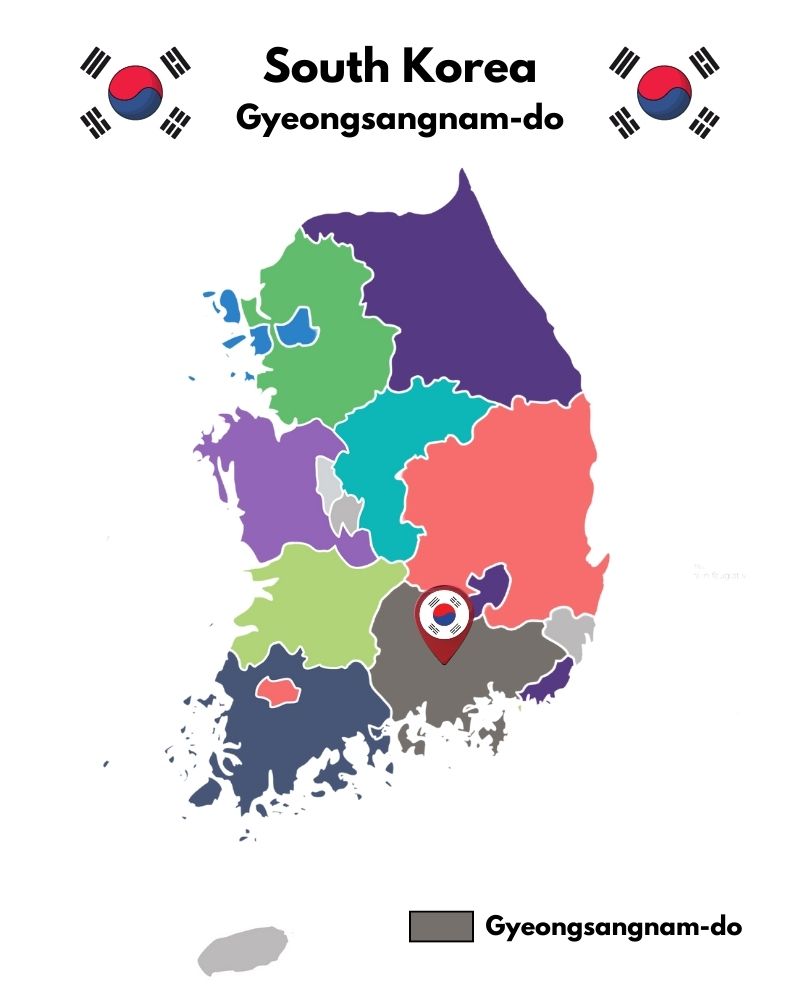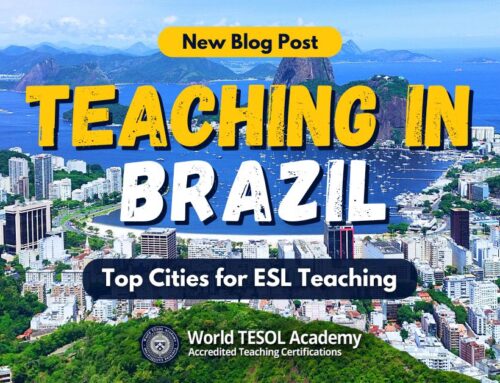
Public School Teaching Programs in South Korea: GEPIK | SMOE | GOE | EPIK
Teaching English in South Korea is an opportunity that many aspiring teachers dream of pursuing. One of the most common ways of launching a teaching career in South Korea is through a government-run teaching program like EPIK.
When researching what opportunities are available for English teachers in South Korea, many teachers often come across other government-run public school teaching programs such as SMOE, GEPIK, and GOE. With all of these different acronyms floating around, it’s no wonder that many teachers struggle with being able to tell the programs apart and select the most suitable one.
In this article, we’ll go over what the teaching programs are, how they differ, and how you can apply to them.
What are public school teaching programs in South Korea?
All public schools in South Korea are operated at a provincial level but under federal oversight by the Ministry of Education. This means that if you wish to teach English in public schools in South Korea, you are going to have to have to apply to a government-run placement program.
One of the main reasons why English teachers look to these public school programs is due to the great benefits they come with.
Here are some of the most popular benefits of teaching in public schools in South Korea:
Living and teaching in South Korea should not just be about working. Having the opportunity and time to also travel, explore, and immerse yourself in a different culture is what makes public school teaching programs so popular among English teachers.
Let’s now take a closer look at what these programs are, how they differ and how to apply to them.

What are the SMOE, GEPIK, GOE, and EPIK programs?
If you have just started looking into English teaching in South Korea, then you might have come across a few of the different acronyms that often get thrown around when talking about teaching jobs in public schools.
Programs such as EPIK, SMOE, GEPIK, and GOE are some of the most commonly mentioned ones when one searches for information about English teaching in South Korea. These programs were established as a way to handle the recruitment of English teachers for public schools throughout South Korea.
These acronyms can understandably cause a bit of confusion when trying to decide which one to choose.
Previously, the recruitment of new public school English teachers was mostly handled directly by the branch offices of each province and city.
However, a few years back, it was decided that this process was to become more centralised through the Ministry of Education’s EPIK program. Not only did this make it easier for the branch offices to deal with recruitment for each semester, but it also made it easier than ever for aspiring teachers to apply to the different programs.
Thanks to the restructuring, all of the previously mentioned programs (SMOE, GEPIK, and GOE) were mostly absorbed into the federal EPIK program. In a way, these programs still exist on their own as some of them partially still handle some of their own recruitment.
However, a vast majority of the placements for each program are now handled by the Ministry of Education through the EPIK program.
This means that you are now able to apply to them all through one single process, instead of several separate ones.
GEPIK – Gyeonggi English Program in Korea

SMOE – Seoul Metropolitan Office of Education
Location: Gyeonggi-do province, suburbs of Seoul
Intake: Spring and Fall
Application deadline: Refer to the EPIK program’s deadline
GEPIK used to be run by the branch office of the ministry of education in the Gyeonggi province. The Gyeonggi province is the most populous province in South Korea, as it covers the Seoul region as well as the surrounding areas around the capital.
The Gyeonggi office was mainly operated by contracting third-party recruitment agencies to handle the screening of teachers. Once provided with a list of candidates, they then selected which teachers to invite to the program. This setup was met with varying results, which eventually led to the absorption of the GEPIK program into EPIK in 2016.
Despite being absorbed into the EPIK program, there are still a few public schools that are funded by the city hall rather than federally by the Ministry of Education. Some of these still handle their own recruitment outside of the EPIK program through agencies. However, the majority of the recruiting now goes through the national EPIK program.
How to apply to the GEPIK program
Nowadays, if you wish to apply to the GEPIK program, you’ll do it through EPIK. When filling out your EPIK application, you are able to select the provinces and cities that you prefer to teach in.
One thing to keep in mind is that for the Gyeonggi region, you are not able to select specific cities you wish to teach in. Instead, you’ll select the whole region and then the EPIK office will decide which city within Gyeonggi you’ll be placed in.
While there is no guarantee that you’ll receive a placement within the Gyeonggi region, there is still a chance that they’ll try to fulfill your request, as they know that a happy teacher is more likely to perform better in their role.
SMOE – Seoul Metropolitan Office of Education

SMOE – Seoul Metropolitan Office of Education
Location: Seoul Metropolitan area
Intake: Spring and Fall
Application deadline: Refer to the EPIK program’s deadline
SMOE is another public school teaching program that was widely popular among English teachers. The SMOE branch office focused on recruitment for the Seoul metropolitan area. Just as with GEPIK, SMOE was also absorbed into the EPIK program and it is now often unofficially referred to as EPIK-Seoul.
How to apply to the SMOE program
The same process as with GEPIK applies when applying to this program. Instead of handling the recruitment on its own like it used to, the Seoul Metropolitan Office now uses the EPIK program to recruit teachers. This makes this program one of the most competitive as a wide majority of teachers wish to live and teach in Seoul.
When sending in your EPIK application, you are able to select Seoul metropolitan area as your preferred location. Please keep in mind that this is one of the most competitive locations to teach in, making it very difficult to get selected for a teaching position in the Seoul metropolitan area.
GOE – Gyeongsangnam-do Office of Education

GOE – Gyeongsangnam-do Office of Education
Location: Gyeongsangnam-do province
Intake: Year-round
Application deadline: Refer to the EPIK program’s deadline or direct hiring agencies.
Lastly, we have the GOE program. This program is not quite as popular as the two previous ones, as the focus of the branch office in charge is on placements in more rural parts of South Korea, namely the Gyeongsang province.
This is usually a popular choice for teachers that wish to have a more adventurous and scenic teaching experience or teachers that wish to avoid the stressful and busy metropolitan life in South Korea. While the province still includes some fairly big cities like Busan and Changwon, the vast majority of placements end up in more rural parts of the region.
How to apply to the GOE program
Similar to the SMOE and GEPIK programs, a big portion of the placements are handled through EPIK. However, the GOE program also does a lot of direct hires via agencies. One of the perks of working with agencies is that they hire year-round.
If you are interested in teaching via the GOE program, you can either apply directly through EPIK by selecting the Gyeongsang province or you can try to find direct placements via third-party agencies or job ads. When choosing an agency, make sure to carefully research them in order to make sure that they are legit.

Applying via the EPIK program
Now that we have a better understanding of how the different programs work, you are able to start researching the different regions of South Korea in order to see which areas seem to align with the kind of teaching experience you wish to have.
Once you’ve made up your mind, it’s time to start preparing for sending in your application.
If you have specific areas that you would like to teach in (e.g. the GEPIK, SMOE, and GOE areas), then you can enter these on your EPIK application. It’s worth noting that the EPIK program is highly competitive, which means that you need to prepare well before sending in your application. Another thing to keep in mind is that there earlier you are able to apply, the higher the possibility of there being positions available in your desired locations.
If you do not have a specific preference for where you wish to teach, you can simply let the EPIK program decide for you.
Also, make sure that you pay close attention to the application deadline. As the application process can be quite long and sometimes tedious, you are going to need a lot of time to secure all of the documents needed for your application.
In order to help you get started with your EPIK application, you can use our free EPIK guide. In the guide, we’ll help explain how the EPIK program works, as well as how and where to apply.
For more information about South Korea’s public school teaching programs, please reach out directly to the EPIK team or visit the official EPIK website.







Leave A Comment